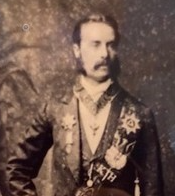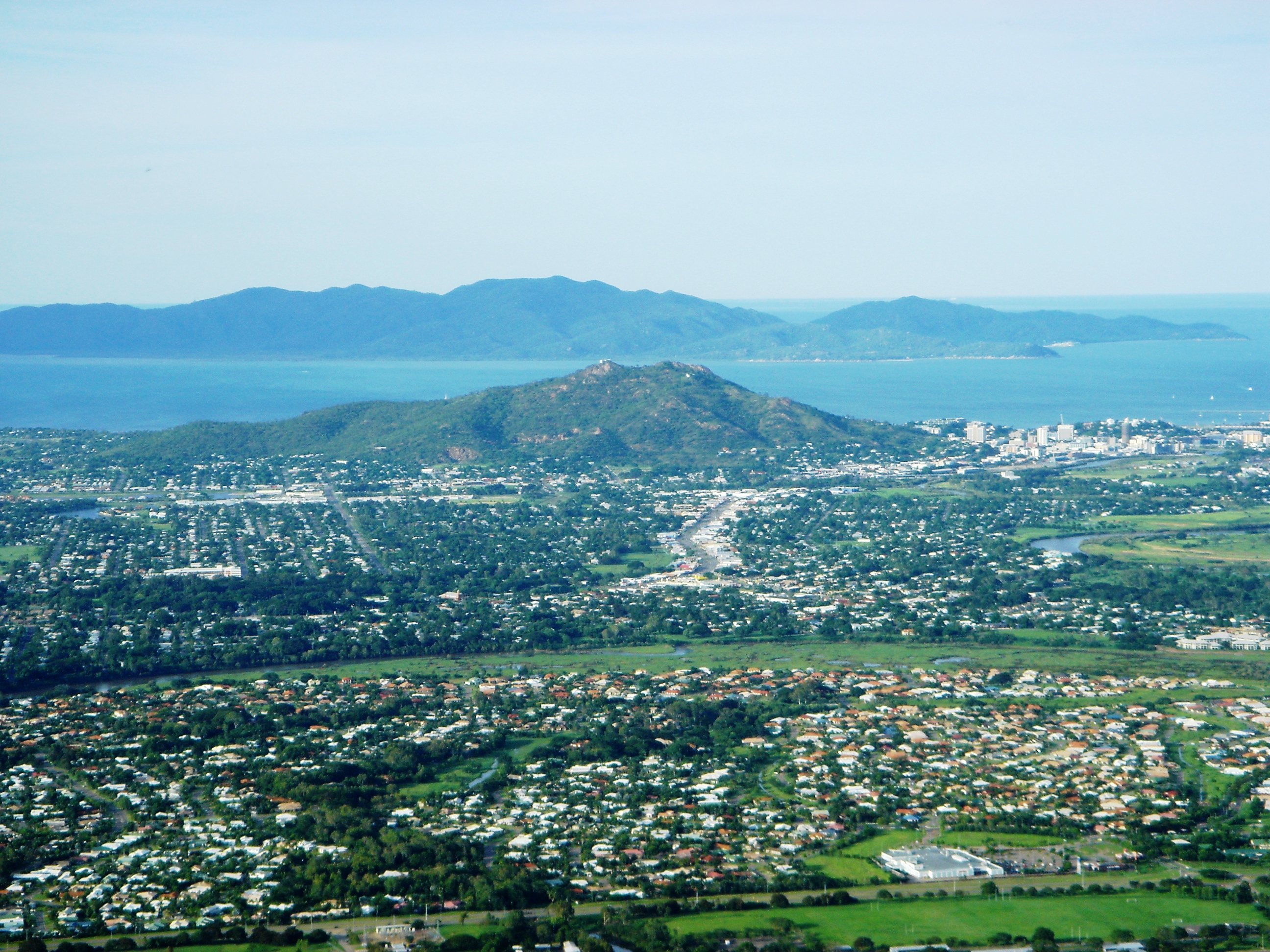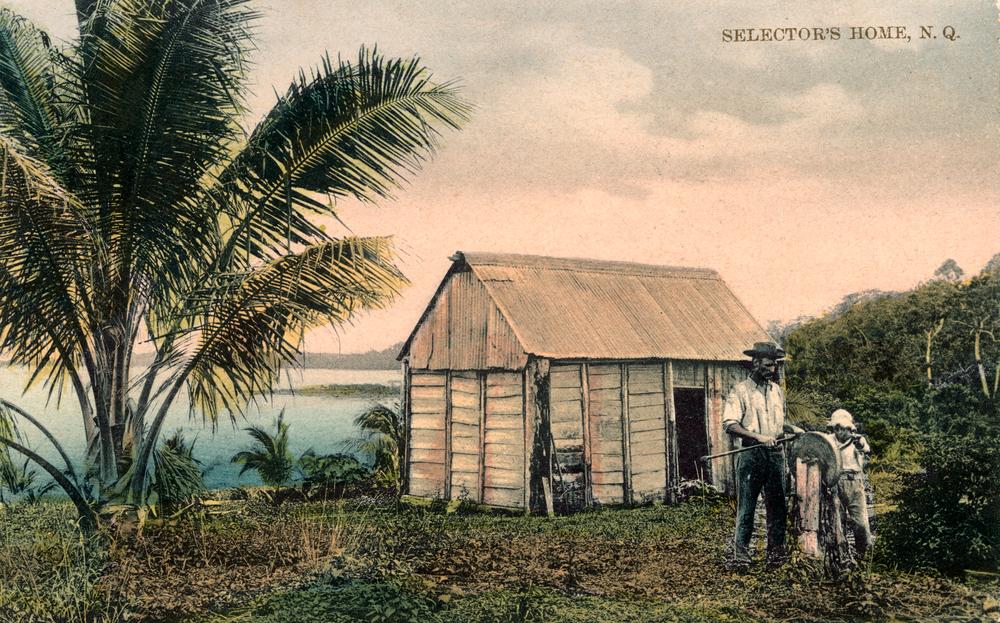|
Ingham, Queensland
Ingham is a rural town and locality in the Shire of Hinchinbrook, Queensland, Australia. In the , the locality of Ingham had a population of 4,426 people. It is named after William Bairstow Ingham and is the administrative centre for the Shire of Hinchinbrook. Geography Ingham is approximately north of Townsville and north of the state capital, Brisbane. The town is positioned about 17 km inland within the Herbert River floodplain where Palm Creek drains the low-lying lands. It is surrounded by sugar cane farms which are serviced by a number of private railways The North Coast railway line passes through the town, which is served by the Ingham railway station. The Bruce Highway also passes through the town. Tokalon is neighbourhood in the south-east of the locality (). It takes its name from the Tokalon railway station, which was named by the Queensland Railways Department on 24 December 1924, from the name of a local selection. ''Tokalan'' is an Aboriginal word mean ... [...More Info...] [...Related Items...] OR: [Wikipedia] [Google] [Baidu] |
AEST
Australia uses three main time zones: Australian Western Standard Time (AWST; UTC+08:00), Australian Central Standard Time (ACST; UTC+09:30), and Australian Eastern Standard Time (AEST; UTC+10:00). Time is regulated by the individual state governments, some of which observe daylight saving time (DST). Australia's external territories observe different time zones. Standard time was introduced in the 1890s when all of the Australian colonies adopted it. Before the switch to standard time zones, each local city or town was free to determine its local time, called local mean time. Now, Western Australia uses Western Standard Time; South Australia and the Northern Territory use Central Standard Time; while New South Wales, Queensland, Tasmania, Victoria, Jervis Bay Territory, and the Australian Capital Territory use Eastern Standard Time. Daylight saving time (+1 hour) is used in jurisdictions in the south and south-east: South Australia, New South Wales, Victoria, Tasmania, ... [...More Info...] [...Related Items...] OR: [Wikipedia] [Google] [Baidu] |
William Bairstow Ingham
William Bairstow Ingham (4 June 1850 – 28 November 1878) was a British colonist who operated a sugarcane plantation in the lower Herbert River region and was an agent for the colonial Government of Queensland during the early years of the British occupation of New Guinea. The town of Ingham in North Queensland is named after him. Early life William B. Ingham was born in 1850 at Blake Hall, which was the Ingham family mansion in Mirfield, Yorkshire. His parents were Joshua Ingham, a wealthy businessman who owned mines and mills, and Mary Cunliffe Lister. A young Anne Brontë was employed as a governess at Blake Hall to educate the Ingham children, whose behaviour included spitting at her and throwing her belongings out the window. Brontë described the children as being "desperate little dunces" and later integrated her experiences at Blake Hall into her debut novel ''Agnes Grey''. William was educated at Malvern College and later went to University College, Oxford but dropp ... [...More Info...] [...Related Items...] OR: [Wikipedia] [Google] [Baidu] |
George Elphinstone Dalrymple
George Augustus Frederick Elphinstone Dalrymple (6 May 1826 – 22 January 1876) was a colonist, explorer, public servant and politician, member of the Legislative Assembly of Queensland. He founded the towns of Bowen and Cardwell, and pioneered the opening up of the Herbert, Burdekin, Johnstone and Daintree River regions to British colonisation. Early life Dalrymple was born in Scotland, the tenth son of Sir Robert Dalrymple Horn Elphinstone, Bart., by his marriage with Graeme, daughter of Colonel David Hepburn. Ceylon In the mid-1840s, Dalrymple moved to the British colony of Ceylon where he became a coffee plantation owner in the Central Provinces. Much of the land used to establish these plantations had been confiscated from local peasants, who were left both landless and unemployed as imported Tamil coolies were used as labour. Discontent over their loss of land led many Sri Lankan peasants to revolt in 1848 in what is known as the Matale rebellion. Dalrymple was a pr ... [...More Info...] [...Related Items...] OR: [Wikipedia] [Google] [Baidu] |
Hinchinbrook Island
Hinchinbrook Island (or Pouandai to the Biyaygiri people) is an island in the Cassowary Coast Region, Queensland, Australia. It lies east of Cardwell and north of Lucinda, separated from the north-eastern coast of Queensland by the narrow Hinchinbrook Channel. Hinchinbrook Island is part of the Great Barrier Reef Marine Park and wholly protected within the Hinchinbrook Island National Park, except for a small and abandoned resort. It is the largest island on the Great Barrier Reef. It is also the largest island national park in Australia.Hema maps. (1997). ''Discover Australia's National Parks''. pp 178 – 179 Random House. Natural heritage Hinchinbrook Island is made up of late Palaeozoic igneous rocks. The main pluton in the east of the island, the Hinchinbrook Granite, is composed of various hypersolvus granites and intrudes volcanics, granodiorites, and granites. The island and coastal ranges are thought to have been thrust up as blocks with subsidence betwe ... [...More Info...] [...Related Items...] OR: [Wikipedia] [Google] [Baidu] |
Cardwell, Queensland
Cardwell is a coastal town and rural Suburbs and localities (Australia), locality in the Cassowary Coast Region, Queensland, Australia. In the , the locality of Cardwell had a population of 1,309 people. Geography The Bruce Highway Highway 1 (Australia), National Highway 1 and the North Coast railway line, Queensland, North Coast railway line are the dominant transport routes; connecting with the Queensland provincial cities of Cairns and Townsville. Cardwell railway station in Bowen Street serves the town (). The town is a long narrow strip hugging the coast with Greenwood Hill immediately to the west of the town () rising to above sea level. West of Cardwell the rugged topography of the Cardwell Range intercepts the trade winds resulting in high rainfall. The coastal escarpment is covered in rainforest which transitions to the west to eucalypt woodland and tropical savanna. Cardwell Range biodiversity has been protected by the introduction of Forestry Reserves, National P ... [...More Info...] [...Related Items...] OR: [Wikipedia] [Google] [Baidu] |
Long Pocket, Queensland
Long Pocket is a rural locality in the Shire of Hinchinbrook, Queensland, Australia. In the , Long Pocket had a population of 198 people. History Long Pocket State School opened on 26 July 1915 and closed on 14 February 1994. It was at 2062 Abergowrie Road (), now in neighbouring Lannercost. In the , Long Pocket had a population of 198 people. Education There are no schools in Long Pocket. The nearest primary school is Trebonne State School in neighbouring Trebonne Trebonne is a rural town and locality in the Shire of Hinchinbrook, Queensland, Australia. In the , Trebonne had a population of 397 people. History Prior to European settlement, the Trebonne area was inhabited by the Warakamai People. The tow ... to the south-east. The nearest secondary school is Ingham State High School in Ingham to the south-east. Community groups The Abergowrie-Long Pocket branch of the Queensland Country Women's Association meets at 2346 Abergowrie Road (). References {{Shire ... [...More Info...] [...Related Items...] OR: [Wikipedia] [Google] [Baidu] |
North Queensland
North Queensland or the Northern Region is the northern part of the Australian state of Queensland that lies just south of Far North Queensland. Queensland is a massive state, larger than many countries, and its tropical northern part has been historically remote and undeveloped, resulting in a distinctive regional character and identity. Townsville is the largest urban centre in North Queensland, leading it to be regarded as an unofficial capital. The region has a population of 231,628 and covers . Geography There is no official boundary that separates North Queensland from the rest of the state. Unofficially it is usually considered to have a southern border beginning south of the Mackay Region southern boundary, but historically it has been as far south as Rockhampton. To the north is the Far North Queensland region, centred on Cairns and out west is the Gulf Country. A coastal region centred on its largest settlement is the city of Townsville. The city is the lo ... [...More Info...] [...Related Items...] OR: [Wikipedia] [Google] [Baidu] |
Warrgamay Language
Warrgamay is an extinct Australian Aboriginal language of northeast Queensland. It was closely related to Dyirbal. It is also known as ''Waragamai'', ''Wargamay'', ''Wargamaygan'', ''Biyay'', and ''Warakamai.'' The language region includes the Herbert River area, Ingham, Hawkins Creek, Long Pocket, Herbert Vale, Niagara Vale, Yamanic Creek, Herbert Gorge, Cardwell, Hinchinbrook Island Hinchinbrook Island (or Pouandai to the Biyaygiri people) is an island in the Cassowary Coast Region, Queensland, Australia. It lies east of Cardwell and north of Lucinda, separated from the north-eastern coast of Queensland by the narrow H ... and the adjacent mainland. References Sources *Dixon, R.M.W. 1981. 'Wargamay'. In ''Handbook of Australian languages'' vol. 2, eds R.M.W. Dixon and B.J. Blake, pp. 1-144 + map. Canberra: ANU Press. {{Pama–Nyungan languages, East Dyirbalic languages Extinct languages of Queensland ... [...More Info...] [...Related Items...] OR: [Wikipedia] [Google] [Baidu] |
Warakamai
The Warrgamay people, also spelt Warakamai, are an Aboriginal Australian people of the state of Queensland. Language Their language, Warrgamay, is now extinct. It was a variety of Dyirbalic, and appears to be composed of three distinct dialects:''Wargamaygan'' spoken around the lower reaches of the Herbert River; ''Biyay'' spoken at the mouth of the Herbert, in the area of Halifax and Bemerside; and ''Hinchinbrook Biyay,'' spoken around the coastal area south of Cardwell and offshore on Hinchinbrook Island. Words in the Warrgamay language include: * ''knarbo'' (tame dog) * ''gerolo'' (wild dog) * ''baby'' (father) * ''kora/yong/yonga'' (mother) * ''mecolo'' (white man) Country The Warrgamay were the Indigenous people of Halifax Bay, and held in Norman Tindale's calculations, approximately of tribal domains. An early resident, James Cassady, specified that they had of shoreline, extending into the hinterland approximately . Their northern neighbours were the Girramay, whil ... [...More Info...] [...Related Items...] OR: [Wikipedia] [Google] [Baidu] |
Land Selection In Queensland
The process of land selection in Queensland in Australia began in 1860 and continued under a series of land acts in subsequent years. When Britain claimed possession of Australia, it did so on the basis of terra nullius (that the land belonged to nobody) and did not acknowledge that Indigenous people had any ownership over the land. All land in Australia became Crown land and was sold or leased by the Australian colonial governments according to the needs of the colonists. Land was considered the Queensland colony’s greatest asset. Prosperity of the colony was measured according to the extent of land settlement. Rent from land leases was the colony’s largest revenue earner. The initial political contest was between pastoralists and selectors lead by the "town liberals" who desired that immigrants have an equitable right to small land holdings. Closer settlement for agricultural purposes was promoted by the Queensland Government who desired settlement by immigrants to Queenslan ... [...More Info...] [...Related Items...] OR: [Wikipedia] [Google] [Baidu] |
Queensland Railways Department
Queensland Rail (QR) is a railway operator in Queensland, Australia. Owned by the Queensland Government, it operates local and long-distance passenger services, as well as owning and maintaining approximately 6,600 kilometres of track and related infrastructure. QR was also responsible for all Queensland freight services, and from 2002 operated interstate services under the Australian Railroad Group, Interail and QR National brands. These were all spun out into a separate entity in July 2010, and later privatised as Aurizon. History Beginnings Queensland Railways was the first operator in the world to adopt narrow gauge (in this case ) for a main line, and this remains the systemwide gauge within Queensland today. The colony of Queensland separated from New South Wales in 1859, and the new government was keen to facilitate development and immigration. Improved transport to the fertile Darling Downs region situated west of Toowoomba was seen as a priority. As adequate rive ... [...More Info...] [...Related Items...] OR: [Wikipedia] [Google] [Baidu] |
Bruce Highway
The Bruce Highway is a major highway in Queensland, Australia. Commencing in the state capital, Brisbane, it passes through areas close to the eastern coast on its way to Cairns in Far North Queensland. The route is part of the Australian National Highway and also part of Highway 1, the longest highway route in Australia. Its length is approximately ; it is entirely sealed with bitumen. The highway is named after a popular former Queensland and federal politician, Harry Bruce. Bruce was the state Minister for Works in the mid-1930s when the highway was named after him. The highway once passed through Brisbane, but was truncated at Bald Hills when the Gateway Motorway became National Highway 1 upon its opening in December 1986. The highway is the biggest traffic carrier in Queensland. It initially joined all the major coastal centres; however, a number of bypasses, particularly in the south, have diverted traffic around these cities to expedite traffic flow and ease urban con ... [...More Info...] [...Related Items...] OR: [Wikipedia] [Google] [Baidu] |








